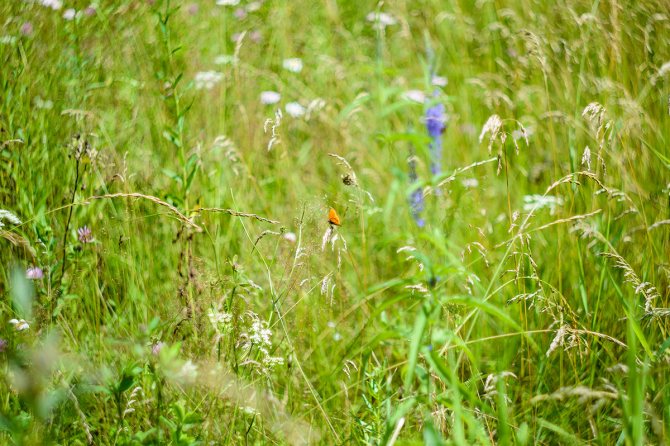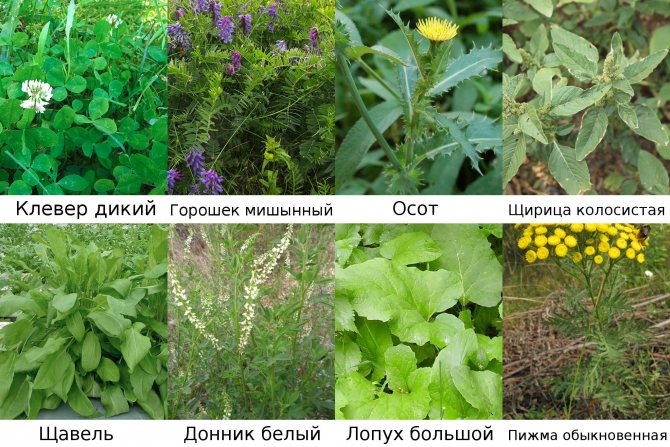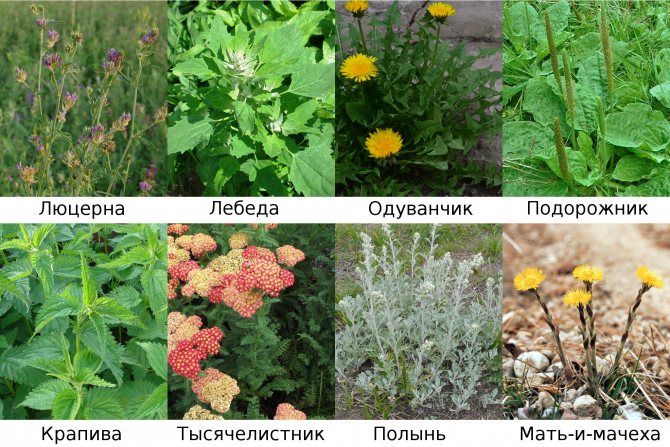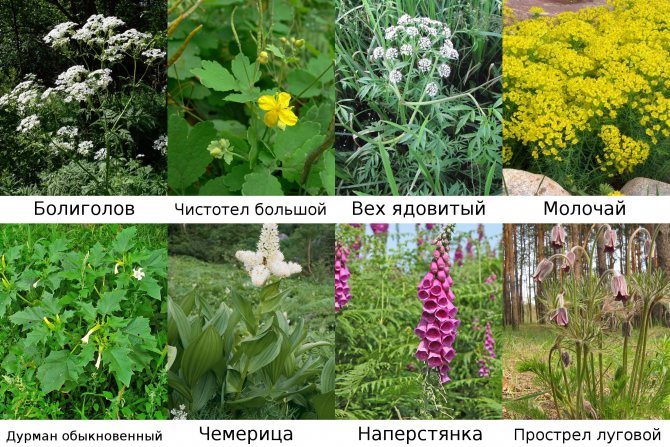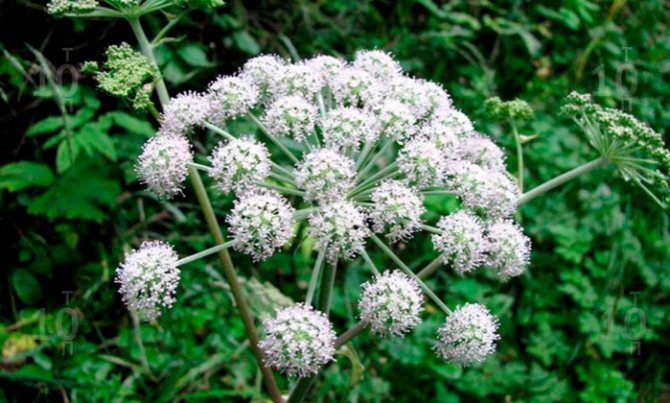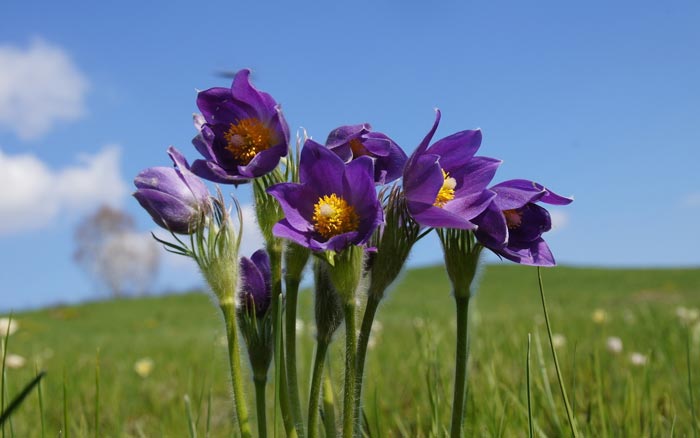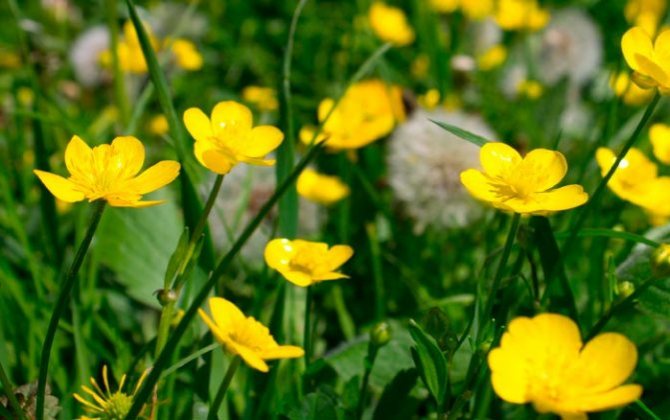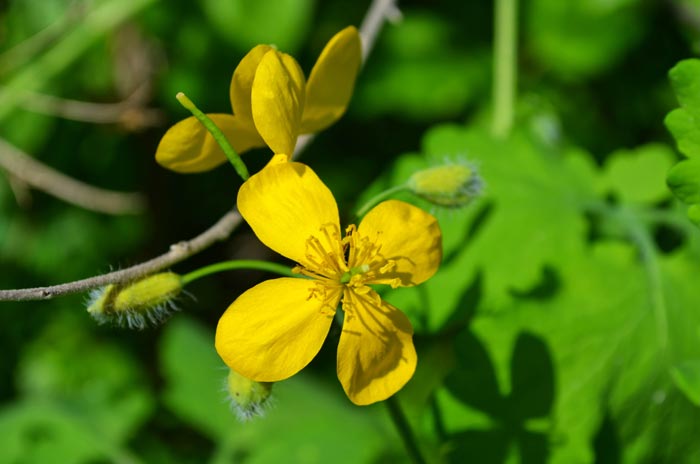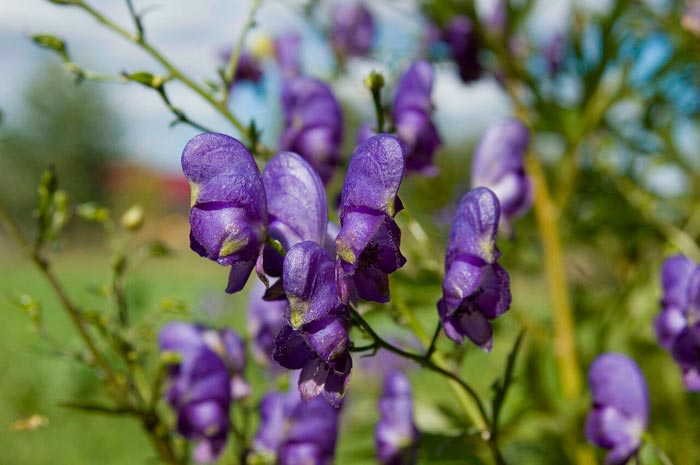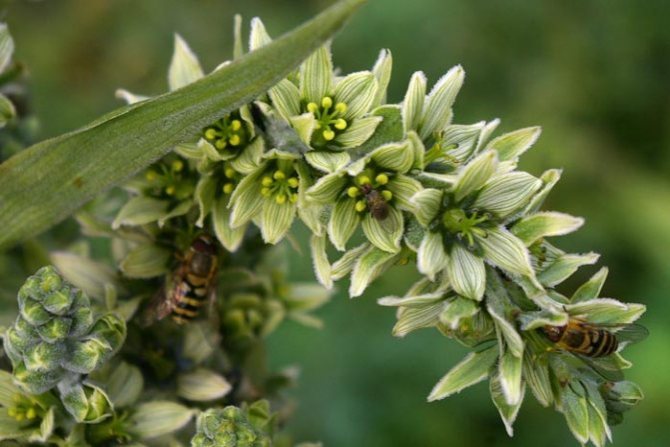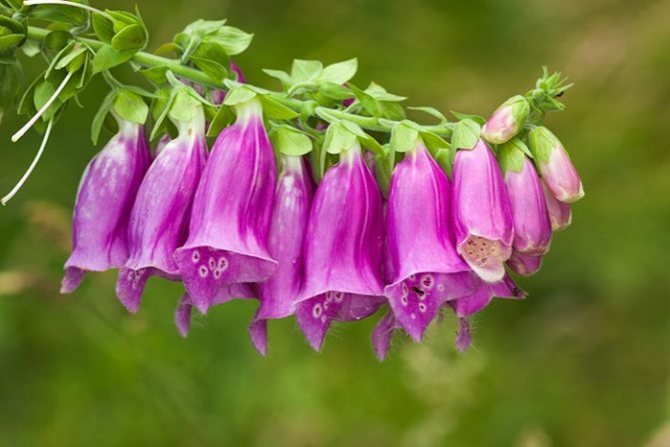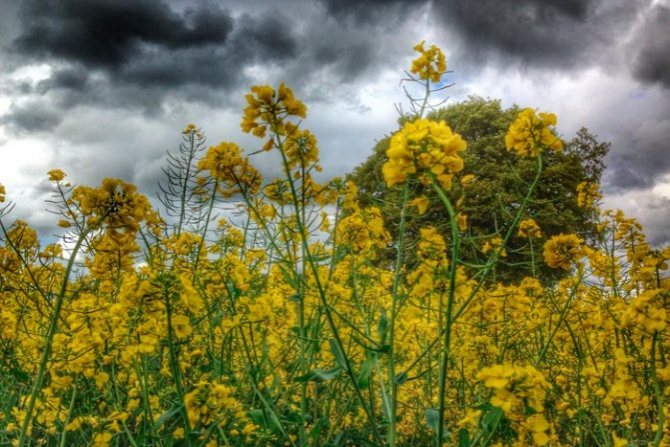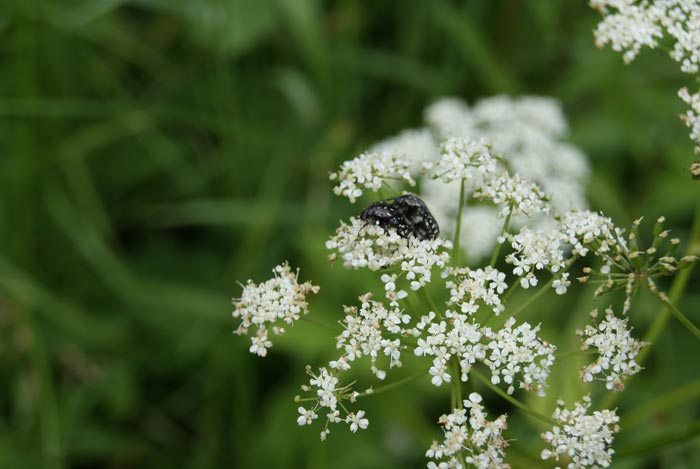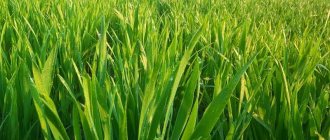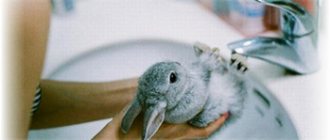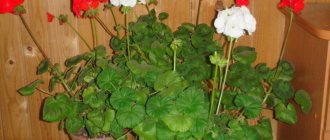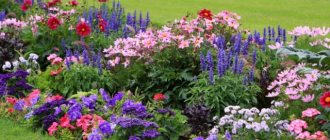When raising rabbits in your backyard, you need to know that the bulk of the diet of these animals should consist of green mass. Such food will not only help you significantly save money, but it will also be very useful for your pets. However, not every plant can be used to feed rabbits. With a huge variety of herbs, there are those that can cause irreparable harm to your pets.
Therefore, below we will take a look at what grass to give to rabbits and which to avoid. To make your idea of raising rabbits bring a good income in the future, we will take a closer look at the most common plants that grow everywhere. How to properly collect them for harvesting for future use, what kind of grass they give to pets, and what kind of grass they are afraid to pluck. And what herbal varieties you can sow yourself in your garden.
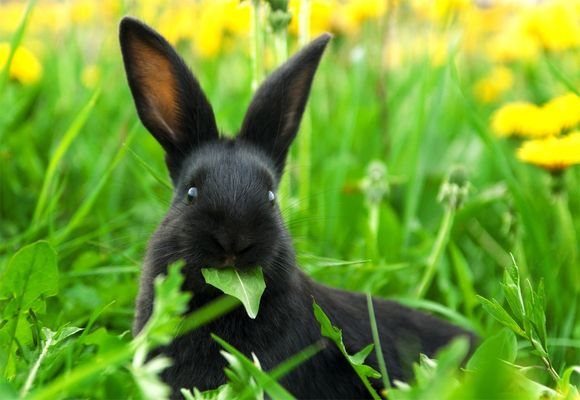
What grass can be given to rabbits
The rabbit diet should contain green grass, leaves, fresh tree branches. With such feeding, you can save on grain feed, at the same time saturate the animal with valuable vitamins and microelements.
The best option is wild greens (meadow, steppe, forest herbs), stems of legumes and cereals, tops of garden crops.
Rabbits' diet should be varied. It is unacceptable to feed animals with only one type of grass - this will negatively affect their health and growth.
Useful properties of herbs
Herbs have a number of positive properties:
- The digestive tract perfectly processes green mass, it is well absorbed.
- Vegetable fiber helps to cope with the passage of food through the intestines.
- Green food is a source of essential vitamins.
- The quality of the fur coat of the animals improves.
- Thanks to the herbal stalks, rabbits can sharpen their ever-growing teeth.
- Some herbs have medicinal properties.
- Profitable feed for rabbit breeders: - minimum costs for collection and preparation; - the use of grass reduces the consumption of more expensive grain, compound feed; - plant amino acids and proteins accelerate growth, increase the weight of animals.
Herbs are given along with dry food. Dry supplements are excellent at absorbing excess water contained in greens.
Meadow, steppe and forest grasses
| Herbs for rabbits | ||
| Name | Structure | Note |
| Shoots of leguminous plants | They contain a lot of proteins and a small amount of fiber. | A lot of clover in the diet negatively affects the sexual function of rabbits. |
| Cereal herb | It contains a lot of fiber, proteins, amino acids. | Give before flowering. |
| Nettle dioecious | Lots of proteins, vitamins. | Harvested until the budding period has come. Before feeding, knead by hand or scald. |
| Dandelion drug | It contains a large amount of calcium and proteins. | There should not be more than 30% of the total grass mass, overfeeding slows down growth. |
| Common caraway | Rich in essential oils. | |
| Hogweed | Juicy nutritious greens. | Only leaves are fed. Gloves are worn before the fence because of the risk of skin burns. |
| Rape winter | There are many proteins in the composition. | The seeds are not allowed to enter the food, because they are very poisonous. |
| Ferocious | Many valuable vitamins, amino acids, proteins. | Harvested before the seeds appear. |
| To dream common | Contains proteins, fiber, carbohydrates. | |
| Donnik | Lots of vitamins and minerals. Has a wonderful smell. | |
| Bluegrass | Delicate shoots with a high nutritional content. | |
| Timofeevka (Arzhanets) | A wonderful storehouse of vitamins. | |
| Chicory | Contains many vitamins, fructose, inulin. | Collect only young shoots. |
| Medium starfish(Woodlice) | A juicy herb with a wide range of nutrients. | Wither or dry before serving. |
Weeds
| Weed grasses for rabbits | ||
| Name | Beneficial features | Note |
| Creeping wheatgrass | Contains vitamins, fiber, amino acids. | Used in feed, except for greens and rhizomes. |
| Sow thistle | Rich and useful composition. | |
| Shepherd's bag | Rabbits' favorite treat containing a mix of vitamins. | |
| Bird knotweed (Highlander) | It contains many vitamins and minerals. | |
| Burdock large (Burdock) | Very nutritious. | It is not allowed to give to rabbits. Adults are given no more than a couple of leaves per animal per day. |
| Field bindweed | Lots of useful amino acids. | Contains poisonous alkaloids, therefore, they are given exclusively in dried form. |
Garden plants
| Garden tops for rabbits | ||
| Name | Beneficial features | Note |
| Carrot tops | Very healthy and nutritious food. | Give without restrictions. |
| Sour sorrel | Rich and useful composition. | They give a little because of the risk of urolithiasis. |
| Beet tops | Very juicy food, many vitamins. | Give limitedly with astringent food (eg, yarrow). Young rabbits are not allowed. |
| Bean shoots | Give tops and pods. They contain a lot of proteins. | Youngsters are prohibited. |
| Green peas | ||
| Melissa officinalis | They contain a lot of essential oils, trace elements, tannins. | |
| Peppermint | ||
| Jerusalem artichoke tops | Lots of nutrients. Stimulates weight gain and accelerated growth. | Useful for pregnant rabbits, lactating females and young individuals. |
| Corn shoots | Contains many nutrients and water. | Fermentation in the stomach. |
| Cabbage leaves | They contain many vitamins. | Food is limited, due to the possibility of indigestion. |
| Onion feathers | Lots of amino acids, vitamins, phytoncides. | It is given more often to check - if the animal eats quickly, then it lacks nutrients in the diet. |
It is forbidden to give tops of tomatoes, nightshade, physalis for food to rabbits. Potato greens are allowed, but in very small quantities, and it is worth monitoring the reaction of animals to it.
Medicinal plants
Many herbs are not only nutritious food for rabbits, but also natural remedies for the prevention or even treatment of many diseases.
Among the famous "natural healers" that rabbits enjoy eating:
- Wheatgrass (rhizomes) has diuretic properties.
- Dandelion - increases appetite and improves digestion.
- Burdock Is an excellent astringent.
- Nettle - a valuable hemostatic agent. Has a lactogonic effect. Helps to adjust the functioning of the stomach and intestines. Has antimicrobial effect.
- Knotweed is an astringent.
- Caraway - an excellent antiseptic. Stimulates lactation, relieves bloating. It is a natural anti-coccidial agent.
- Hogweed improves lactation.
- Helps to improve appetite in rabbits cilantro, parsley, coriander, celery.
- To dream used as an anti-inflammatory and antimicrobial agent.
- Chicory has a positive effect on digestion.
- Melissa and mint - a treat to increase appetite and calm cowardly pets.


Also, below are the beneficial medicinal herbs that are added to the rabbit diet for their medicinal properties.
Yarrow
Astringent. Stimulates appetite. Normalizes digestion. Helps with flatulence. Excellent anti-inflammatory and antibacterial drug.It is useful to add to mash with beet tops.
Wormwood
Appetite stimulant. Anthelmintic agent. Add to food once every 3 - 4 days. If the rabbit eats a lot, it will excite the nervous system.
Common tansy
Anthelmintic agent.
Blooming Sally
It contains a lot of protein and ascorbic acid. Anti-inflammatory and antiviral properties.
Big plantain
Contains a large amount of proteins and sucrose. Helps to heal wounds, has anti-inflammatory, antibacterial properties. Add a little to the herbal mass.
Common mother and stepmother
Increases appetite, improves digestion, strengthens. Helps with colds. They are fed by mixing with other vegetation.
St. John's wort
It has a positive effect on digestion. Give in a limited amount.
Galega (Goat's House)
As part of a storehouse of nutritious and useful components. Used as a diuretic, anchorage drug. Stimulates lactation. Excellent prevention of helminths.
The bedstraw is real
Laxative. Give a little, along with astringent feed.
Saxifragous thigh
Astringent property.
Needles
Contains a lot of vitamins, proteins, minerals, carbohydrates. Stimulates appetite and sexual desire, improves digestion. They are remarkably reflected in the taste of meat, improves the coat. Excellent prevention of colds.
The lawn type of grass is not suitable for feeding rabbits due to its low nutrient content.
Garden greens are an important part of the diet
Herbal products that grow in the home garden are numerous weeds, tops of root crops, specially sown legumes and cereals. Various garden greens, which appear in spring, are suitable for feeding the animals.
Early cabbage, grassy tops of young carrots are a favorite delicacy of eared animals. Various garden weeds can be a great help for feeding these pets. With great pleasure, rabbits eat horse sorrel, beet tops, parsley, celery, parsnips. Rhubarb is a plant that contains the maximum amount of vitamins for these animals.
Many farmers specifically plant certain plants in their gardens. Young peas, vetch are typical early rabbit grasses that are easy to grow and harvest. Animals are very fond of legumes. Their use contributes to rapid growth and weight gain.
Tansy, clover, meadow rank, willow-herb, nettle, sweet clover effectively strengthen the immunity of rabbits. In addition, plants such as tansy, garlic, dill, pumpkin seeds have a pronounced anthelmintic effect.
Red clover contains about 20% protein, but consumption should be limited. For eared pets, some cereals will be very useful. For example, oats, corn, rye.


These feeds differ in calorie content. They are harvested in early summer, slightly dried and added to feed. During the warm season, you can get two crops of oats. Such mixtures make up about 70% of cereals and 30% of other green herbs.
In what form can you give grass to rabbits
Rabbits should not be fed with fresh grass. It is recommended to dry it a little before the dacha. It is imperative to remember that greenery should not be mowed near a road or a factory, where a lot of dust and toxic production waste gets on the plant.
Usually, the herbs are collected in surplus, and the unused part of the green mass is left to dry for hay. When harvesting grass, it is worth carefully monitoring so that poisonous plants for eared plants do not get into food.
Wet grass
Every rabbit breeder must remember that it is strictly forbidden to feed rabbits with wet grass, greens immediately after rain or with dew. Firstly, such products rots very quickly, and secondly, wet raw materials are the cause of disorders for the delicate digestive tract of eared animals.
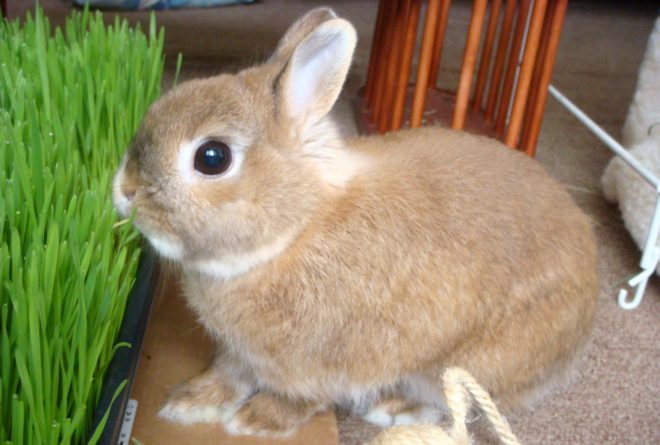

Coarse grass
Rough shoots of plants are not contraindicated in rabbits, but it is impractical to use them. The eared ones chew them very reluctantly. In addition, there are few nutrients in such food. The main composition of coarse grass is fiber, which is difficult for animals to digest.
Grass with flowers and seeds
It is advisable to collect all the greens before flowering. The herbs that bloom must be treated with caution. Some become very rude during this period. And such species, for example, as rapeseed or colza, acquire poisonous seeds. At all stages of development, only dandelions and legumes are harvested.
Rip or mow
It has been proven that when using a scythe, plants are oxidized by metal blades. Therefore, hand-picked grass for rabbits is considered more useful and safer.
Video Feeding rabbits: GRASS
Dangerous buttercups
Avoid picking these poisonous grasses for rabbits in the first place. Buttercups are easy to recognize and are ubiquitous. You must definitely know this plant, be able to distinguish it from dozens of others. Its yellow flower has a five-leafed calyx and a five-lobed corolla. They usually grow in low-lying and damp places, bloom from spring to autumn. They contain the strongest poison, protoanemonin, which is dangerous for all types of animals. Moreover, when dried, the plant becomes absolutely safe, the poison evaporates.
Poisonous plants
Not all grass is good for rabbits. Some representatives of the flora cause quite severe poisoning in eared pets, which can even lead to death. For breeders, the ability to identify plants so as not to harm their pets is very important.
It is known that such a simple procedure as drying can reduce the toxicity of some herbs or completely neutralize them. But at the same time, there is greenery, which, when dried, on the contrary, accumulates dangerous toxins. But some green seedlings, when ensiled, become deadly poisons for fluffs.
| The most poisonous plants | |
| Buttercup | Especially dangerous when fresh. Causes severe diarrhea, bloating, food poisoning. It becomes less hazardous when dried. |
| Lumbago (Dream herb) | Poisoning accompanied by convulsions or paralysis. When dried, it almost completely loses its toxic properties. |
| Aconite(Fighter) | A particularly poisonous species of buttercups. Causes poisoning, which is fatal. Equally dangerous fresh and dried. |
| Chemeritsa white | Diarrhea, bloating, shortness of breath, up to the death of the animal |
| Colchicum (Colchicum) | Fatal poisoning |
| Celandine large | Diarrhea, bloating, convulsions, possible death of the animal |
| Less poisonous herbsMay cause symptoms of poisoning, eared should not be allowed to enter food. | |
| Datura common or smelly | |
| Wild mustard | |
| Wild radish | |
| Avran medicinal | |
| Calla (Calla) | |
| Common doll (Agrostemma) | |
| Juniper | |
| Astragalus | |
| Ordinary tobacco | |
| Nightshade | |
| Black sea rhubarb | |
| Eggplant | |
Make sure there are no plants that are poisonous to rabbits before mowing the grass.
| Plants that are less likely to be fed to rabbits, but also worth remembering about their toxicity: | • digitalis• castor oil plant• horsetail• hemlock• henbane• aloe vera• apple and pear seeds• almond• macadamia nut• all parts of the apricot (except the fruit)• avocado• begonia• lupine• fern• bracken | • ivy• carnation• echinacea• dracaena• delphinium• ficus• yucca• kalanchoe• sweet potato• snowdrop• poppy• pion• oak leaves• valerian cornflower |
How to prepare and store hay?
The best mixture of herbs for hay is legume-cereal, from alfalfa, clover, bluegrass, timothy, wheatgrass.
For hay, herbs are chosen before flowering and even before bud setting, in glades, hillocks, in dry and sunny places. These should be wild areas of meadows, steppes and forests away from roads and other sources of pollution, or personal lands.
Hay is mowed in clear weather, the grass is left right there on the ground to dry. You can't keep it in the sun for a long time, so after a couple of hours the hay is collected and dried under a canopy. When properly prepared, it retains its green color and pleasant, fresh scent.
In households, hay is stored in barns, in hayloft, on wooden decks, in haystacks or haystacks. Main conditions: shade, dryness, ventilation. On farms, bales or grass briquettes are harvested from it to minimize leaf loss during distribution and eating.
Medicinal herbs for rabbits are collected, dried for a short time in the sun, then tied in small brooms (so that the stems do not snot inside), which are dried under a canopy, in the attic, and stored in brooms.
How to dry medicinal herbs for rabbits
What to do if a rabbit is poisoned
Even experienced farmers can sometimes be mistaken or overlooked when choosing grass for rabbits. A very small amount of poisonous vegetation can cause severe poisoning in animals.
| Poisoning symptoms in rabbits: | To help a rabbit in case of poisoning, they immediately call a veterinarian and provide first aid: |
| • Vomiting, hypersalivation, bloating, diarrhea, or constipation; • Depressed or agitated state of the animal (depending on the type of poisonous substance); • Constriction or dilation of the pupils; • Disruption of physical activity, paralysis, convulsions; • Difficulty breathing; • Tachycardia or bradycardia; • Sudden bleeding or spontaneous miscarriage in rabbits. | • Gastric lavage, cleansing enema is performed; • Inside are given adsorbing drugs (activated carbon, enterosgel, polysorb, smecta); • Intravenous administration of medications (the procedure is performed only by a veterinarian). |
The best prevention of poisoning in rabbits is to control the composition of food for eared pets.
Video Juicy feed for rabbits! Fresh grass or dried?
Sowing herbs to feed rabbits
To ensure that rabbits are fed green food, breeders need to not only rely on wild greens or a vegetable garden, but also set aside an area for sowing forage greens. The best option is to plant cereals (oats, wheat), legumes (peas, vetch, clover, alfalfa).
Advantages of your own plot with fodder greenery:
- Self-sowing will always help out the breeder during a drought, or when there is a temporary lack of opportunity to harvest other types of grasses.
- Growing greens on your own plot for harvesting for the winter is very practical and economical.
- It is good to feed the animals with a sowing mix of plants before slaughter - they will quickly gain the required weight.
In medicine, there is an expression: "Do no harm!". It is with this motto that it is worth approaching the nutrition of rabbits in rabbit breeding. From what the rabbit eats, from the quality and composition of food, especially when choosing herbs, it will depend on how the animals will grow, how they will look, what benefits they will bring to their breeders.
Roots
Speaking about what kind of grass rabbits can use, we forget that these funny creatures will crunch various vegetables with appetite. Since it will not be possible to grow young growth only on fresh green fodder, let's look at which root crops can be included in their diet. All of them contain a lot of water, a little protein, fat, fiber and minerals. Rabbits eat sugar beets well, because of the laxative effect, feed is not recommended.Carrots and cabbage perfectly diversify the diet, you can also give potatoes, which are slightly boiled. Remember to rinse and peel all vegetables well.
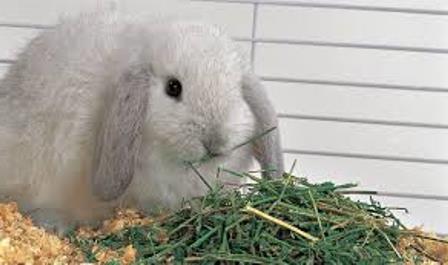

Melons should be mentioned separately. In the fall, when green food runs out, these crops are great for food for rabbits. It can be pumpkin, watermelon, zucchini rich in vitamins and microelements. Rabbits will eat them either neat or mixed with other foods.


